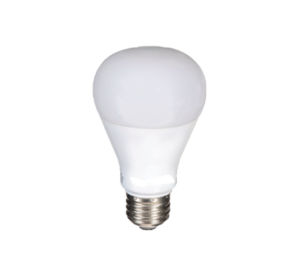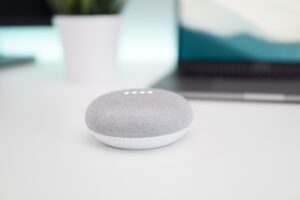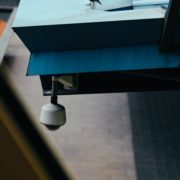Hate Mornings? Try a DIY Sunrise Alarm Clock Using Smart Lights
Princess Anna was onto something when she said, “The sky’s awake, so I’m awake.” Due to circadian rhythms, the inverse is also true. When the sky is asleep, people generally want to be asleep. Because of this, even if you’re a morning person, it can be difficult getting up in the morning during winter when the dark is glaring in through your windows.
Sunrise alarm clocks were developed as a means of combating this. A set duration before your scheduled alarm, the clock’s light will turn on at its dimmest setting. It will gradually brighten in an artificial sunrise that eases you out of sleep. When your alarm goes off, you’ll wake up to a lit room.
The only downside is the cost. Cheaper options are available, but these don’t have a smooth sunrise cycle. They will often be one hue rather than mimicking the multiple hues of a natural sunrise. Plus, instead of gradually fading to brightness, they will become brighter in incremental jumps. There are also complaints about the cheaper sunrise alarm clocks not lighting up a room as thoroughly as some of the other options. For a good sunrise alarm clock, you would be looking at $100+. You can make a DIY sunrise alarm clock using smart lights as a less expensive alternative.
Choosing Your Smart Lights

Smart lights can connect to your phone, smart hub, or smart speaker. You can remotely control them from an app or voice commands. You can also schedule times to automatically turn them on and off.
When you create your DIY sunrise alarm clock using smart lights, you will want to get at least one light, which you can put in a lamp. However, for the best experience, you will want to put smart lights in your bedroom’s overhead light fixture. If the light fixture has a dimmer switch, you will want to convert it to a regular switch before using smart lights. Otherwise, the light will flicker and make a buzzing noise.
For a lamp, you may run into problems if you try using a touch-activated lamp, but if you use a lamp with multiple brightness settings, you can turn it on to the highest setting after installing your smart light, and you should be fine.
Smart lights come with a broad range of features and capabilities. For your DIY sunrise alarm clock, you will at least want to find a light with a fade-in feature that you can schedule to fade to full brightness over an extended duration. To optimize your sunrise alarm clock more fully, get color-changing lights. Ideally, you will find bulbs capable of fading through a color cycle that you set while simultaneously becoming brighter.
If you want to connect your smart lights to your smart home hub or smart speaker, you will want to check for compatibility as you research different bulbs. Keep in mind that the device you use to connect to your smart lights will need to be connected to Bluetooth or the internet for your DIY sunrise alarm clock to work as scheduled. If you generally turn your phone on airplane mode at night, you will want to start using do not disturb instead. However, unlike many regular sunrise alarm clocks, a power outage won’t throw off your programming.
Programming Your Artificial Sunrise
Most sunrise alarm clocks have a 30-minute cycle. You can copy this or choose a different duration as you create your DIY version. For purposes of this article, we’ll use the 30-minute model, and you can adjust as needed for what you decide is best for you. There are two main methods you can choose between when creating your sunrise.
Sunrise Simulation
The most accurate way of simulating the sunrise involves using the light tones in a natural sunrise. This is the method the top-ranked sunrise alarm clocks use. They start with a red-toned light at the lamp’s dimmest setting. As the light progressively gets brighter, the light fades through shades of orange and then yellow. By the time it reaches its brightest setting, the light takes on the hue of natural daylight.
To recreate this with your DIY sunrise alarm clock:
1. Familiarize yourself with your smart light app.
The exact process will vary based on the brand of light you selected, but this guide will walk you through the general idea.
2. First Schedule
Create a new schedule starting 30 minutes before your alarm will go off with a light that fades from red to orange over ten minutes and increases from 0% to 33% brightness.
3. Second Schedule
Create a second schedule starting twenty minutes before your alarm with a light that fades from orange to yellow over ten minutes and increases from 33% to 66% brightness.
4. Third Schedule
Create a third schedule starting ten minutes before your alarm with a light that fades from yellow to daylight over ten minutes and increases from 66% to 100% brightness.
5. Set to Repeat
Set the schedule to repeat on the days you want it to.
If your bulb isn’t able to fade between colors, you can manually create a fading effect. Start with the color set to red. Then, create a new schedule with a shade of red closer to orange and so forth as you work your way through the sunrise cycle. The more schedules you program, the more natural your sunrise will feel. You will want ten minutes of red and shades that get closer to orange. Then, have ten minutes of orange and shades that get closer to yellow. Next, have ten minutes of yellow that get closer to daylight. Finally, set your lights for daylight when your alarm goes off.
These may sound like intensive processes, but most smart light apps are easy to use, and once you create your sunrise schedule, you never have to do it again. If it’s still more work than you want to do, there is an alternative. You won’t get the natural shades of sunrise, but it’s easier to set up.
A Simplified Sunrise

For a simplified sunrise, pick one light color or a white tone. Then, set it to fade from 0% to 100% over 30 minutes, reaching the brightest setting when your alarm goes off. Do you have a Google Nest? There is a built-in feature where you can say, “Hey Google, turn on Gentle Wakeup.” It will automatically set your smart lights to fade to full brightness over the 30 minutes before your scheduled alarm.
Whichever method you decide to go with, you no longer have to wake up to darkness in the winter. With your DYI sunrise alarm clock using smart lights, you can always wake up to sunrise for easier, brighter mornings.











Leave a Reply
Want to join the discussion?Feel free to contribute!